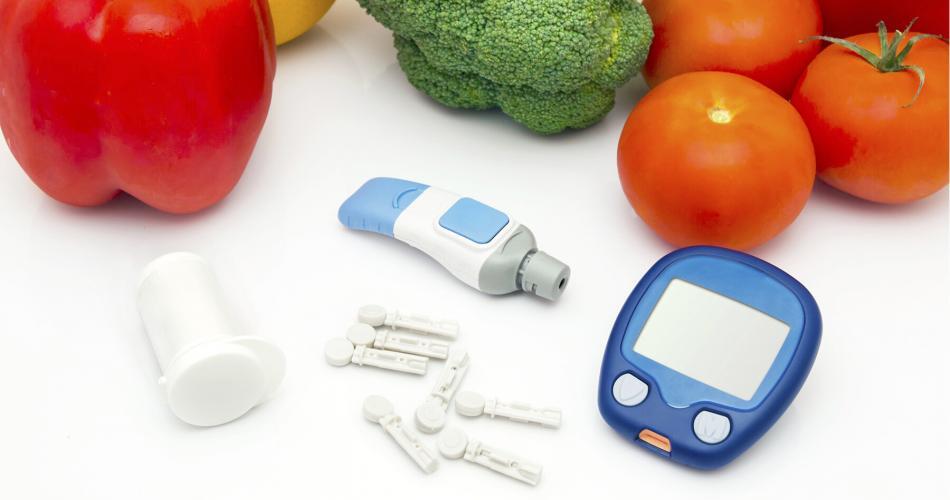Knowing the right kind of food: Food Quiz
- What has a higher sugar content: 330 ml can of regular coke vs 320 ml brown sugar milk tea with pearls?
- Which has higher calories: 140 grams or 1 cup of fried rice vs 117 grams or medium size french fries?
- Which has higher calories: 80 grams or 1/8 slice of a regular pizza vs 65 grams or 1 pack Pancit canton?
Answers will be posted at the end of this article.
All About Diabetes Mellitus: Facts and Figures as stated in the 2019 IDF Diabetes Atlas 9th Edition,
- Approximately 463 million adults (20-79 years) are living with diabetes. By 2045 this will rise to 700 million.
- 79% of adults with diabetes are living in low- and middle-income countries (such as the Philippines).
- 1 in 5 of the people who are above 65 years old have diabetes.
- 1 in 2 (232 million) people with diabetes were undiagnosed.
- Diabetes has caused 4.2 million deaths.
- More than 1.1 million children and adolescents are living with type 1 diabetes.
- More than 20 million live births (1 in 6 live births) are affected by diabetes during pregnancy.
- 374 million people are at increased risk of developing type 2 Diabetes.
Diabetes, in general, can be categorized into different types. Each type of diabetes has a unique and different cause. Each type also has varying effects on the body and unique risk factors for development.
One commonality is the inability to control blood sugar. This leads to hyperglycemia or high blood sugar.
Below are the Three Types of Diabetes Mellitus:
- Type 1 Diabetes
- Type 2 Diabetes
- Gestational Diabetes
Understanding Type 1 Diabetes Mellitus
Type 1 Diabetes is previously known as Juvenile Diabetes or Insulin-Dependent Diabetes
Around 10% of people living with diabetes have type 1. Type 1 Diabetes knows no race, shape, and size. This disease can happen to anyone and there should be no shame in having this.
For Type 1 Diabetes, the body is unable to make any amount of insulin. Our food, most especially carbohydrates, must be broken down into glucose to be used by the body.
This glucose can only enter the cell when insulin is present. Glucose can only be used as a source of energy when there is enough insulin in the body.
Insulin is a hormone made by the pancreas. Its main role is to carry the glucose from the bloodstream and into the cells, something like a transport system. Without insulin, the glucose will remain in the blood leading to hyperglycemia or high blood sugar.
Why can’t my body produce insulin?
Type 1 diabetes is due to an autoimmune reaction where the body attacks its cells (particularly the beta cells of the pancreas) that is responsible for making insulin. This leads to very little or no insulin at all.
The reason why there is an autoimmune reaction is still up to debate. But some proposals are linking genetic factors and environmental conditions.
What age bracket is typically affected by Type 1 Diabetes?
This type of diabetes can strike at any age, however, children and young adults are always almost affected.
Is Type 1 Diabetes Curable?
Type 1 Diabetes cannot be treated but it can be managed. Insulin therapy is the mainstay of treatment for this class. Type 1 diabetics with no access to insulin may die.
But remember, with proper education, compliance to treatment and following a healthy lifestyle, a Type 1 Diabetic can still live a long and fruitful life.
How can insulin be given?
There are a variety of ways to deliver insulin:
- Through a syringe
- Through an insulin pen
- Through a continuous insulin pump
The appropriate method to use would depend on the person. The choice should be made by you and together with a diabetes specialist.
What are the Risk Factors for Having Type 1 Diabetes?
There is still not an established risk factor for Type 1 diabetes. But some proposed that the risk factors are the following:
- Having a family member with Type 1 Diabetes
- Environmental factors
- Viral Infections
Understanding Type 2 Diabetes Mellitus
Type 2 Diabetes is previously known as Adult Onset Diabetes or Non-Insulin Dependent Diabetes
Out of all the types of Diabetes Mellitus, Type 2 is the most common form. It accounts for 90% of all diabetes cases.
Unlike with Type 1, patients with Type 2 Diabetes can still produce insulin. The pathophysiology or the reason behind Type 2 Diabetes is that there is insulin resistance. This happens when the body is not able to use insulin efficiently and glucose remains in the blood.
The end result of Type 2 Diabetes is still hyperglycemia or high blood sugar.
Is Type 2 Diabetes Curable?
Every person is different. Some individuals can control their blood sugar with proper diet and watchful eating while others need oral medications and even insulin shots to control their blood sugar.
The management of diabetes should be individualized and should be tailored fit to your needs. The foundation to managing type 2 diabetes efficiently is by maintaining a healthy diet.
Work to find the proper diet plan suited for your body type and activity. Remember that a little bit of activity every day goes a long way in managing your diabetes.
In conclusion, the cornerstones of treatment are:
- Eating a healthy diet
- Engaging in regular physical activity
- Maintaining an ideal body weight
- Complying with oral medications and insulin as prescribed by a diabetes specialist.
What age bracket is typically affected by Type 2 Diabetes?
Type 2 diabetes commonly affects older adults. Yet in the recent trends, Type 2 Diabetes is becoming more and more common in children and younger adults who are obese.
The reason for this shift is because most young individuals are now physically inactive and are consuming high-calorie diets from fast-food restaurants.
What are the Symptoms of Type 2 Diabetes
The symptoms of Type 2 Diabetes include:
- Increased frequency in urination
- Dry mouth and increasing thirst
- Always feeling tired
- Slow or poor wound healing
- Recurring infections in the skin
- Blurring of vision
- Numbness in hands and feet
- Feeling moody and irritable
- Having dark rashes around the neck and armpits (also known as Acanthosis nigricans)
Understanding Gestational Diabetes
Gestational Diabetes is a type of diabetes that happens during pregnancy. Although it sounds scary, it is very manageable with proper coordination between you and your doctor.
The reason why diabetes develops when a woman gets pregnant is because of the placenta that supports the baby in the womb. The hormones produce by the placenta blocks the action of the mother’s insulin and lead to insulin resistance.
With insulin resistance, diabetic mothers would need three to four times the amount of normal insulin to properly transport glucose into the cell.
Is Gestational Diabetes Curable?
While pregnant, a regular checkup with your doctor should be done to keep blood sugar levels near normal. This should be done in conjunction with special meal plans and regular physical activity once cleared by your Ob-gyn.
This type of diabetes is temporary. This would last until you give birth and when both the baby and placenta are delivered.
Although gestational diabetes would resolve after pregnancy, it still increases the chances of both the mother and the child developing type 2 diabetes later in life.
What should I eat when I have Gestational Diabetes?
It is recommended to have a balanced diet consisting of:
- Plenty of fruits and vegetables.
- Moderate amounts of lean protein and healthy fats.
- Moderate amounts of whole grain such as rice, bread, sweet potato, pasta.
- Lessen the intake of foods high in sugar content such as milk tea, soft drinks, fruit juices, and pastries.
The American Diabetes Association suggested a simple method of meal planning:
- ½ of your plate should contain nonstarchy vegetables such as cabbage, eggplant, carrots, okra, salad greens
- ¼ of your plate should be protein: fish, lean pork, and chicken
- ¼ of your plate should be filled with whole-grain items: brown rice or starchy vegetables: potato, sweet potato
- Include in small amounts some good fat such as avocado and nuts
- Add 1 serving of fruit or milk
Understanding Prediabetes
Prediabetes is the state where you have impaired blood sugar. It simply means, your blood sugar is not low enough to be normal nor is it high enough to be in the diabetic range.
When you have prediabetes, there are no definite symptoms like those seen in Type 1 and Type 2 Diabetes Mellitus.
I am prediabetic, should I be concerned?
When you are prediabetic, this stage is very crucial. The way you act can determine how your disease progresses. If you act right away and improve your diet and exercise, you may delay the progression to being a full-blown diabetic.
What should I do to reduce the likelihood of developing diabetes?
- By increasing your physical activity or by incorporating more physical activities into your daily routine
- This prevents or delays Type 2 Diabetes.
- Eating healthy and having a low carbohydrate (sugar) diet.
- This can be attained with the help of a registered dietician who can create and develop a personal meal plan. Your meal plan should be tailored to your body type and activity.
Answers to the food quiz
- A 330 ml regular can of coke contains 35 grams contains while 1 large size Brown sugar milk tea with pearls contains 92.5 grams of sugar.
- A 140 grams or 1 cup of fried rice has 228 calories while a 117 grams or medium size french fries contains 365 calories.
- A 80 grams or 1/8 slice of a regular pizza has 285 calories while 65 grams or 1 pack pancit canton has 290 calories.
References:
American Diabetes Association, accessed 11 April 2021, https://www.diabetes.org/diabetes
International Diabetes Federation, accessed 11 April 2021, https://idf.org/aboutdiabetes/what-is-diabetes/facts-figures.html
International Diabetes Federation, accessed 11 April 2021, https://idf.org/aboutdiabetes/type-1-diabetes.html
International Diabetes Federation, accessed 11 April 2021, https://idf.org/aboutdiabetes/type-2-diabetes.html
American Association of Clinical Endocrinologist, accessed 11 April 2021, https://www.aace.com/disease-and-conditions/diabetes/what-you-need-know-about-diabetes
American Association of Clinical Endocrinologist, accessed 11 April 2021, https://www.aace.com/disease-and-conditions/diabetes/type-2-diabetes
Medline Plus, accessed 16 April 2021, https://medlineplus.gov/ency/article/007430.htm
Mayo Clinic, accessed 16 April 2021, https://www.mayoclinic.org/diseases-conditions/diabetes/in-depth/diabetes-diet/art-20044295
🧠 Test Your Diabetes Knowledge
Take this 5-question quiz based on what you just learned!



